Apple II

Developed by Atarisoft in 1983.
Atari 2600
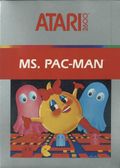
Developed by Atari in 1982. Considered a substantial improvement over the conversion of the original Pac-Man for the Atari 2600. Four mazes are included, with no intermissions. The mazes are not exact copies of the arcade originals, but contain many of the key keys (number of tunnels, color, etc.) Regardless of maze, only two stages need to be completed in order to move on to the next maze.
Atari 5200 & 400/800/XL/XE
Developed by Atari in 1983.
-
screen
-
5200 box
-
800 box
Atari 7800
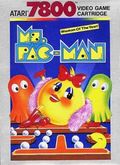
Developed by GCC in 1984.
Atari Lynx
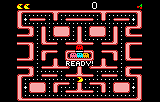
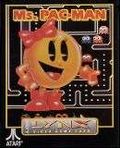
Developed by Atari in 1990. Features extended maze sizes.
The Lynx version also has some other features. For the extended mazes, there is a small turbo figure you can pick up (lightning symbol), under the ghost pen. This appears for a short period of time, and when you collect it, you speed up until you complete the maze or if you die on that maze you lose it.
There is a new intermission 4, called 'The bus stop', where Ms. Pac-Man picks up the four ghosts, and drives off.
There are several new extended mazes that repeat in patterns, and eventually the ghosts stop blinking and you reach one final maze that continues forever, until you end your game.
Commodore 64
Developed by Atarisoft in 1984. Later re-released by Thunder Mountain.
-
screen
-
Atarisoft box
-
Thunder Mountain box
Commodore VIC-20
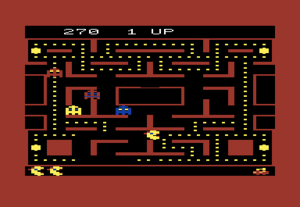
Developed by Atarisoft in 1984. Unlike Pac-Man for the VIC-20, the mazes are much more faithful to the arcade, despite the low resolution.
Game Boy
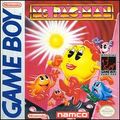
Developed by Namco in 1993. You can choose between two views when you play, a full sized view that scrolls, and a half sized view that fits the whole screen. All of the ghosts are the same color, and therefore indistinguishable by sight alone.
Game Boy Advance

There are two versions of this. One on Namco Museum, and another on Namco Museum 50th Anniversary. Both have different features.
On the Namco museum version. You have a full screen or scrolling version (which shows about half the screen). These are arcade accurate, in colors and settings. You also have access to the arcade settings to change those.
On the Namco 50th Anniversary edition, you have a different full screen version, a rotated view, and the scrolling version. All are arcade accurate.
Game Boy Color
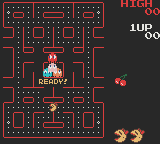
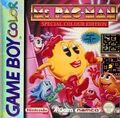
Developed by Namco in 1999. This is a color corrected version of the original Game Boy conversion. Other than the addition of color, the gameplay is identical to the regular Game Boy's. You have an option to see the full screen or a larger version.
It does, however, come included with a GBC conversion of Super Pac-Man.
NES

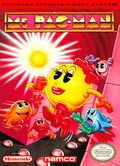
Developed by Namco in 1993. This version's choices of colors for the mazes are not completely faithful to the arcade. The maze size is also reduced to fit the screen.
There are many differences from the arcade version. The fruit counter continues to show bananas for the levels past 6, unlike the arcade which just stops. This is the hardest version of the game (even on arcade mode).
There are four new mazes:
- Racetrack
- Multi-area with one tunnel
- Cross-area quad where the ghosts don't blink
- A big open area board
The maze colors are completely different, and there is a totally different order including two new intermissions, Junior 2 and Junior 3. These are similar to the Junior intermission, except a new Junior is dropped.
The new maze order is as follows: The new maze order is as follows:
| Maze | Description |
|---|---|
| 1-2 | First maze, green/orange |
| 3-5 | Second maze, olive/blue/purple |
| 6-9 | Chase board, lightblue/purple/grey/lightgreen |
| 10-13 | Junior board, brown/green/blue/pink |
| 14-16 | Chase board, brightgreen/orange/olive |
| 17 | Racetrack, blue |
| 18-20 | Junior scene 2, pink/lightblue/purple |
| 21 | Multi-1 tunnel, grey |
| 22,23 | Chase board, darkgreen/lightgreen |
| 24 | Open area, blue |
| 25-28 | Repeats boards first,second,chase,junior boards, pink/green/orange/blue |
| 29-32 | Repeats racetrack,multi1-tunnel(no blink),crossquad,openarea, olive/purple/lightblue/blue |
The mazes from 25-28,29-32, as a set of 8 continue to repeat forever until you quit the game. You see intermission screens during these also.
PC
Developed by Atarisoft in 1983. Later re-released by Thunder Mountain.
-
screen
-
Atarisoft box
-
Thunder Mountain box
Sega Gamegear
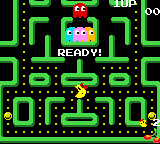

Developed by Namco in 1995. This version also features new mazes that were not included in the arcade version.
TI-99/4A
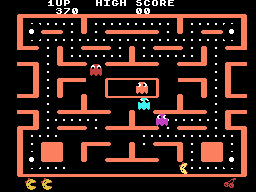
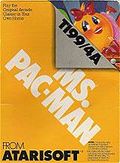
Developed by Atarisoft in 1983.
Xbox 360
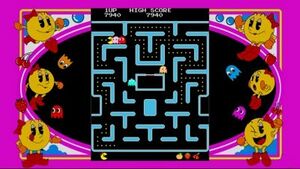
Microsoft made Ms. Pac-Man available for download on the Xbox Live Arcade for 400 points in 2007. It is very arcade accurate, and contains achievement points that can be earned for completing certain tasks or stages.
Tengen Conversions
The conversions of Ms. Pac-Man developed by Tengen contained the original game as well as many upgrades, like the choice between original, small, large, or "strange" mazes, optional or obligatory use of speed booster, alternating or simultaneous 2 player games, difficult selection, and the option to continue a limited number of times. Any maze that is too large to fit on the screen scrolls vertically. Unlike the arcade version, each variation ends on level 32. Their is a fourth intermission, called "The end", where Pac-Man and Ms. Pac-Man wave goodbye to the player, and the game ends. Finally, although there is an 'arcade' mode on the NES/Sega Master versions the 3rd maze has extra dots, on the left and right side, not found in the arcade version. The Genesis/SNES versions do not have these dots, and is arcade accurate.
NES
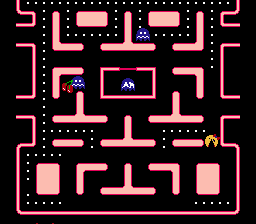

Developed by Tengen in 1990. This is the best looking version, with arcade accurate textures and colors. The sprite sizes are slightly off, but it looks more like the arcade version that the other systems.
Sega Genesis

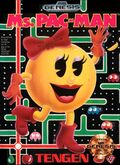
Developed by Tengen in 1991.
Sega Master System
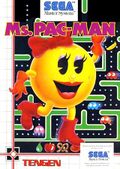
Developed by Tengen in 1991 but only released in Europe.
SNES

Converted and ported to the SNES by Williams Entertainment in 1996.







